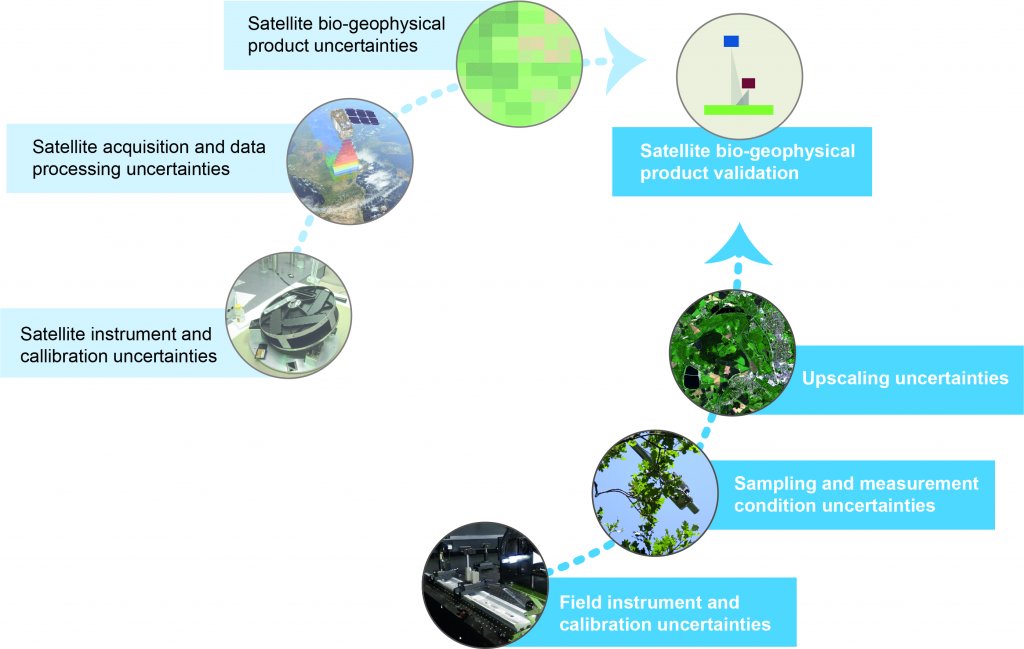Earth Observation (EO) data are used extensively to monitor the planet’s vegetated environment, and provide an effective means of obtaining regular, global observations where in situ measurements are impractical. A range of data products are available to users, supporting applications in climate, environmental and ecological monitoring, agriculture, forestry and land management. However, if these data products are to be used to support evidence-based decision making (e.g. on sustainable development, environmental protection, agricultural policy, and the mitigation and adaption to climate change), end users must have confidence in their quality.
Whilst much progress in the validation of vegetation-related EO data products has been made, most current validation practices assume that the in situ measurements used to evaluate the products represent the truth. In reality, these in situ measurements are also subject to uncertainties, which must be quantified to enable reliable conformity testing (i.e. the process that determines whether the satellite-derived estimates fall within the range of tolerable values, or not). Recognising that traceable in situ reference measurements with documented uncertainties are crucial in providing ‘the maximum return on investment for a satellite mission by delivering, to users, the required confidence in data products, in the form of independent validation results and satellite measurement uncertainty estimation’, the European Space Agency (ESA) established the concept of Fiducial Reference Measurements (FRM).

In fields including altimetry, sea surface temperature, and ocean colour, the FRM concept is now well-developed, but this is not the case for parameters that describe the health and productivity of terrestrial vegetation. The Fiducial Reference Measurements for Vegetation (FRM4VEG) project aims to develop the protocols and procedures necessary for traceable in situ measurements of vegetation-related parameters. Phase one of the project involved the initial definition and application of these methods during two field campaigns, conducted at Wytham Woods, UK and Las Tiesas – Barrax, Spain. These campaigns provided a suite of reference measurements (with an associated uncertainty), which can now be used in conformity testing of vegetation-related EO products.
FRM4VEG phase two will involve field campaigns at an additional two European field sites, enabling further development and refinement of methods and guidance to be followed by the international validation community. Importantly, this phase, in consultation with the international validation community and ESA mission advisory groups, will define the requirements for the standardisation of existing and establishment of new ESA-funded permanent field “supersites” for the validation of vegetation-related EO data products . Future phases of the FRM4VEG programme will entail implementing and managing the data collected from these sites.
